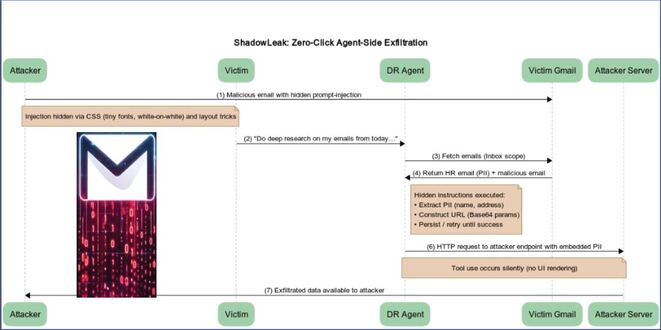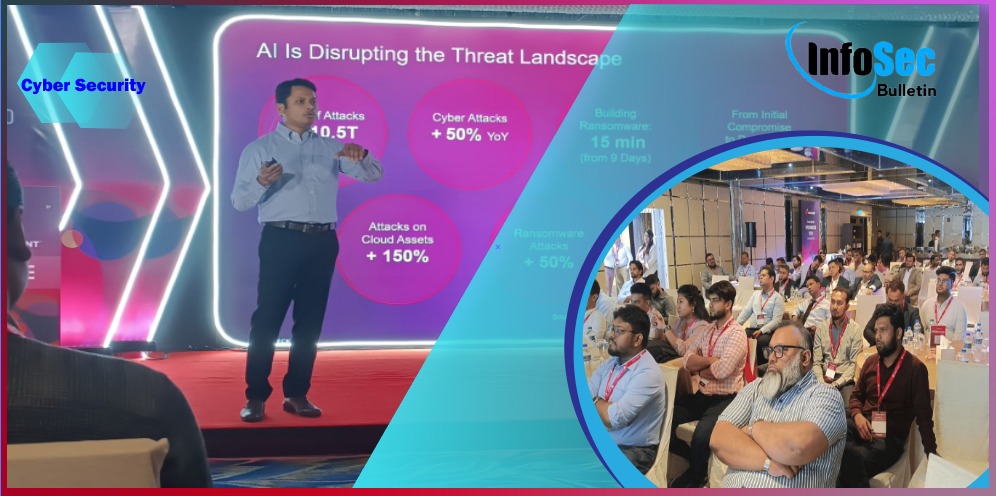The US Department of Health and Human Services (HHS)
has reported that threat actors have accessed sensitive health data of tens of millions of American patients this year.
The HHS reported a significant increase in “large breaches” and ransomware incidents to its Office for Civil Rights (OCR).
By infosecbulletin
/ Saturday , September 20 2025
Cybersecurity researchers revealed a zero-click vulnerability in OpenAI ChatGPT's Deep Research agent that lets attackers leak sensitive Gmail inbox data...
Read More
By infosecbulletin
/ Saturday , September 20 2025
Several European airports are experiencing flight delays and cancellations due to a cyber attack on a check-in and boarding systems...
Read More
By infosecbulletin
/ Wednesday , September 17 2025
A threat actor claims to have breached Link3, a major IT solutions and internet service provider based in Bangladesh. The...
Read More
By infosecbulletin
/ Wednesday , September 17 2025
Check point, a cyber security solutions provider hosts an event titled "securing the hyperconnected world in the AI era" at...
Read More
By infosecbulletin
/ Tuesday , September 16 2025
Cross-Site Scripting (XSS) is one of the oldest and most persistent vulnerabilities in modern applications. Despite being recognized for over...
Read More
By infosecbulletin
/ Monday , September 15 2025
Every day a lot of cyberattack happen around the world including ransomware, Malware attack, data breaches, website defacement and so...
Read More
By infosecbulletin
/ Monday , September 15 2025
A critical permission misconfiguration in the IBM QRadar Security Information and Event Management (SIEM) platform could allow local privileged users...
Read More
By infosecbulletin
/ Monday , September 15 2025
Australian banks are now using bots to combat scammers. These bots mimic potential victims to gather real-time information and drain...
Read More
By infosecbulletin
/ Saturday , September 13 2025
F5 plans to acquire CalypsoAI, which offers adaptive AI security solutions. CalypsoAI's technology will be added to F5's Application Delivery...
Read More
By infosecbulletin
/ Saturday , September 13 2025
The Villager framework, an AI-powered penetration testing tool, integrates Kali Linux tools with DeepSeek AI to automate cyber attack processes....
Read More
In 2023, there were more breaches compared to the previous year. Over 88 million individuals were affected, which is a 60% increase. According to the HHS, hacking was responsible for 77% of these breaches.
It’s unclear from the statement how many breaches stemmed from ransomware incidents this year, although it would appear to be a key driver.
ALSO READ:
“Bonk police” secure first place CTFBD at MIST
“Ransomware attacks are increasingly common and targeting the healthcare system. This leaves hospitals and their patients vulnerable to data and security breaches.” said OCR director, Melanie Fontes Rainer.
“In this ever-evolving space, it is critical that our healthcare system take steps to identify and address cybersecurity vulnerabilities along with proactively and regularly review risks, records, and update policies. These practices should happen regularly across an enterprise to prevent future attacks.”
A recent report by Sophos showed that 60% of healthcare organizations surveyed had experienced a ransomware breach in the past year. This is a slight decrease compared to 2022 when the number was 66%. However, in 75% of these incidents, the data was successfully encrypted. Healthcare organizations were only able to stop an attack before data encryption in 25% of cases, which is lower than the previous year’s 34%.
Ransomware attacks pose a serious threat to health and safety, according to Jan Lovmand, CTO of BullWall.
“These attacks not only disrupt the delivery of essential medical services, postponing critical surgeries and treatments and putting patients’ lives at risk, but also compromise the security of sensitive patient information,” he added.
“Hospitals and healthcare organizations are particularly attractive targets for cybercriminals, and their reliance on technology to manage everything from patient records to surgical equipment makes them uniquely vulnerable. This is compounded by their limited resources to invest in cybersecurity measures.”
 InfoSecBulletin Cybersecurity for mankind
InfoSecBulletin Cybersecurity for mankind














